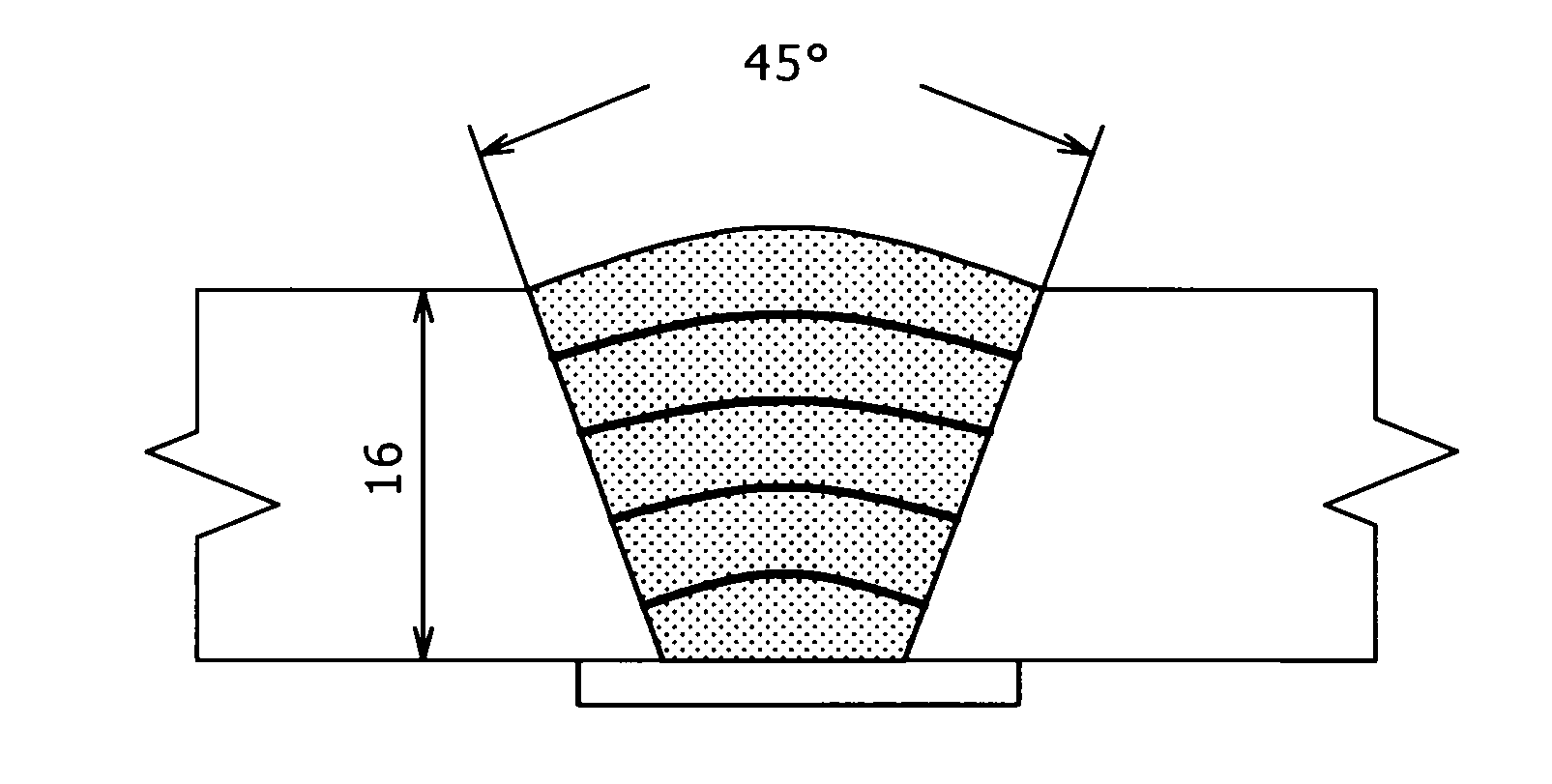Welding solid wire
a solid wire and iron base technology, applied in the direction of welding/cutting media/materials, welding apparatus, manufacturing tools, etc., can solve the problems of high heat treatment cost, insufficient low-temperature toughness, and inability to ensure stable low-temperature toughness in the as-welded state, etc., to achieve high crack initiation resistance, high absorption energy, and high low-temperature toughness.
- Summary
- Abstract
- Description
- Claims
- Application Information
AI Technical Summary
Benefits of technology
Problems solved by technology
Method used
Image
Examples
embodiments
Embodiment 1 (Experimental Example of REM Addition)
[0048]Using a 9% nickel steel base metal (plate thickness: 16 mm) including chemical components (mass % except for O=oxygen, balance: iron) shown in Table 1, processing of a groove in the shape shown in FIG. 1 was performed. Then, using each welding wire including chemical components (mass % except for O=oxygen, balance: iron and inevitable impurities) shown in Table 2, TIG welding was performed under the conditions A or B shown in Table 3. Incidentally, for welding, a fully automatic TIG welding apparatus equipped with an automatic arc control device was used. Welding was performed in the flat position.
TABLE 1CSiMnNiPSO0.050.290.389.10.0050.00420 ppm
TABLE 2WireNo.CSiMnPSNiTiREMOAlB1′0.050.110.700.0030.00313.0——50 ppm0.002—2′0.060.130.650.0040.00510.5 0.008—85 ppm0.004—3′0.030.090.730.0060.00310.90.03—70 ppm0.020—4′0.090.140.750.0040.00213.70.12—60 ppm0.027—5′0.040.080.650.0020.00310.6— 0.00475 ppm0.048—6′0.040.110.240.0080.00410.7...
embodiment 2 (
Experimental Example of Chromium Addition)
[0054]Using a 9% nickel steel base metal (plate thickness: 16 mm) including chemical components (mass % except for O=oxygen, balance: iron) shown in Table 5, processing of a groove in the shape shown in FIG. 1 was performed in the same manner as in Embodiment 1. Then, using each welding wire including chemical components (mass % except for O=oxygen, balance: iron) shown in Table 6, TIG welding was performed under the conditions A or B shown in Table 3 in the same manner as in Embodiment 1. Incidentally, for welding, a fully automatic TIG welding apparatus equipped with an automatic arc control device was used. Welding was performed in the flat position.
TABLE 5CSiMnNiPSO0.060.350.418.90.0040.00525 ppm
TABLE 6WireNo.CSiMnPSNiCrOAlB1′0.040.120.550.0040.00212.0—60 ppm0.0060.0022′0.030.090.480.0030.00611.81.950 ppm0.003—3′0.040.070.760.0060.00410.14.743 ppm0.026—4′0.090.120.700.0060.00413.75.3140 ppm 0.0380.002
[0055]After completion of welding, in...
PUM
| Property | Measurement | Unit |
|---|---|---|
| thickness | aaaaa | aaaaa |
| temperature | aaaaa | aaaaa |
| absorption energy | aaaaa | aaaaa |
Abstract
Description
Claims
Application Information
 Login to View More
Login to View More - R&D
- Intellectual Property
- Life Sciences
- Materials
- Tech Scout
- Unparalleled Data Quality
- Higher Quality Content
- 60% Fewer Hallucinations
Browse by: Latest US Patents, China's latest patents, Technical Efficacy Thesaurus, Application Domain, Technology Topic, Popular Technical Reports.
© 2025 PatSnap. All rights reserved.Legal|Privacy policy|Modern Slavery Act Transparency Statement|Sitemap|About US| Contact US: help@patsnap.com


